- Administrator
- Albums and Singles
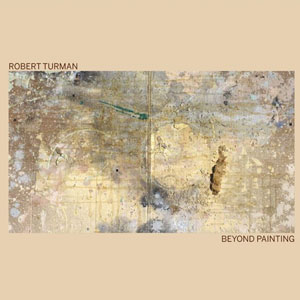 Even though Turman began his music career in the early 1970s and co-founded NON with Boyd Rice, he has not been as prolific, nor has he garnered the same accolades as many of his contemporaries have. Recent collaborations with the likes of Jandek and Aaron Dilloway have lead to a resurgence of interest, and Beyond Painting is one of the products of this rediscovery. Presented here as a luxurious double LP reissue of a self-released CDR, Turman's work is given the recognition it deserves.
Even though Turman began his music career in the early 1970s and co-founded NON with Boyd Rice, he has not been as prolific, nor has he garnered the same accolades as many of his contemporaries have. Recent collaborations with the likes of Jandek and Aaron Dilloway have lead to a resurgence of interest, and Beyond Painting is one of the products of this rediscovery. Presented here as a luxurious double LP reissue of a self-released CDR, Turman's work is given the recognition it deserves.
The material was actually recorded back in 1990 but did not see the light of day until Turman self-released them as a CDR 20 years later.Two-plus decades after their initial creation, these pieces do not sound dated in the slightest, and in hindsight perhaps more progressive and prophetic than many from the era do.
It is on pieces like "First Quarter," with its light, echoing ambience and drifting feel that seems to herald the development of the isolationist sub-sub genre of minimalist music some years later.The repetitive drone and almost chanting voices element of "The Unforgiven" that, via its sporadic but noteworthy evolutions, conveys a similar sound and sense that the likes of Bill Laswell and Mick Harris would later work heavily within.
There is a certain darkness that resides within all of these pieces, but one that is sophisticated and restrained.On "Soft Self Portrait" the bleakness comes about amidst gentle horn-like tones and reversed melodies that results in a composition that is more haunting, rather than frightening.The layered, looped string sounds of "Beyond Painting" convey a similar feel, one that is a bit more tinged nostalgia rather than outright malignance.
For me though, the stand out piece was "Al-Qa'ida," with its vaguely jazz noir guitar and electronics structure that has more of a rhythmic throb to it, rather than the more spectral, textural ambience of the other pieces.From a similar cloth is "Reflux," with a more conventional synthesizer sound and cyclic sequenced melody at the forefront.As it goes on, the melodic pattern falls away to focus on a reverberating expanse and what sounds like echoing digital bells, one of the few moments that reflect the era in which it was recorded.
It is only that bell-like tone on "Reflux" that places this album at a specific point in time, because beyond that it sounds as if it could have been recorded yesterday.While the technological aspect of that might not be overly impressive, since this is not a work that was hung up on digital reverbs or synth presents of the era, it is more the sense of structure and composition that is so forward thinking.The swirling melodies and shifting layers resemble the top tier of artists working currently within this style of music, so considering this dates back nearly 24 years serves to emphasize the brilliance of Robert Turman as an artist and composer.
samples:
 
Read More
- Administrator
- Albums and Singles
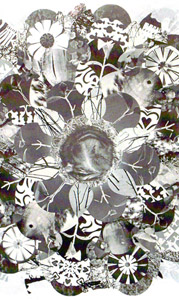 As one of the preeminent psychedelic rock/electro acoustic super groups in the Upstate New York/Massachusetts area, Twilight of the Century have not been overly prolific amongst their many related projects, with this tape representing their first actual release since their founding in 2008. The rock half, Eric Hardiman and Ray Hare, make up Century Plants and have a slew of solo guises, while the more avant garde experimentalism is the work of Mike Bullock and Linda Aubry Bullock, who largely work under their own names and as Rise, Set, Twilight. Hibernation captures the quartet carefully balancing those more aggressive, guitar focused tendencies with the subtle use of electronics wonderfully.
As one of the preeminent psychedelic rock/electro acoustic super groups in the Upstate New York/Massachusetts area, Twilight of the Century have not been overly prolific amongst their many related projects, with this tape representing their first actual release since their founding in 2008. The rock half, Eric Hardiman and Ray Hare, make up Century Plants and have a slew of solo guises, while the more avant garde experimentalism is the work of Mike Bullock and Linda Aubry Bullock, who largely work under their own names and as Rise, Set, Twilight. Hibernation captures the quartet carefully balancing those more aggressive, guitar focused tendencies with the subtle use of electronics wonderfully.
The four pieces that make up this tape were recorded in a single session, yet each have their own distinctive feel.The first half of the cassette is skewed towards the lighter sounds more, with "Hibernation 1" heavily built upon modular synth twinkles and a low, wavering electronic drone that sounds just slightly, intentionally out of tune in order to sound just a bit uncomfortable.Vocals from both Linda Aubry Bullock and Ray Hare lay low in the mix, and even when the bass guitar booms a bit, it remains hushed and just as quickly drifts away into a universe of space echo and engine-like electronics.
The following piece emphasizes the electronics more, but with a looser and less structured feel, bringing in a fair bit of chaos.It is a bit messier comparatively, but never does it come across as unstructured or unfocused noodling.On the flip side, "Hibernation 3" is where Hardiman and Hare flex their muscles a bit more and move to the forefront.Right up front there is distorted guitar and foundation rattling bass, but tastefully echoed and reinforced by a subtle bed of electronics.The bass leads crank up the psychedelic aspect of the sound, while the guitar provides a nice noisy squall as a backing.
The final piece does not seem to sit too definitively in either the electronic or the rock ends of the spectrum, but its wet, splattering electronics and disjointed rhythmic pulses lead to it developing its own idiosyncratic identity.It has a harsher, aggressive quality to it that vacillates between soft and rough, at times tightly honed and well organized, other times a bit disheveled.The concluding half is more structured, however, and even has a somewhat pretty finish to an otherwise spiny and jagged composition.
It is a bit frustrating to know that Twilight of the Century has been so non-prolific in the past five years, because Hibernation is a tantalizing bit of improvised psychedelic electronics that simply made me want to hear more.However, their extremely sparse discography makes that pretty much impossible, so I will just have to wait patiently for the next release.All four artists here are amazing in their own right, but Twilight of the Century has them playing off of one another that ends up being greater than the sum of its parts.
samples:
 
Read More
- Administrator
- Albums and Singles
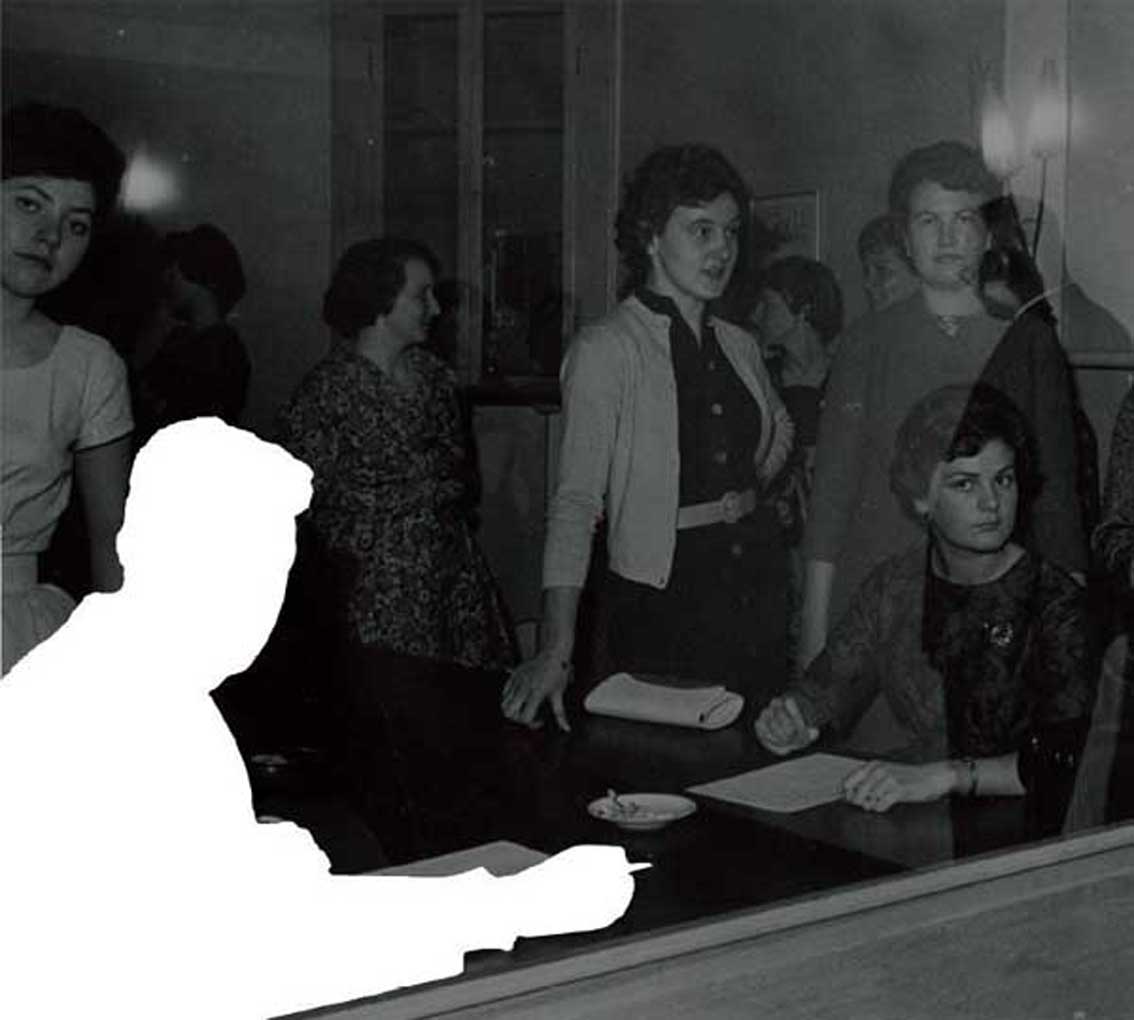 Originally released as an extremely limited LP on Savoury Days and recently reissued by Luke Younger's Alter imprint, this Southeast England band's second album was one of 2013's most criminally overlooked releases.  Combining post-punk deconstructionism, heavy industrial textures, and a strong bent for collage/improvisation, this enigmatic ensemble is a welcome addition to the beloved pantheon of hard-to-define, fringe-dwelling British weirdos like Zoviet France, Throbbing Gristle, and This Heat.
Originally released as an extremely limited LP on Savoury Days and recently reissued by Luke Younger's Alter imprint, this Southeast England band's second album was one of 2013's most criminally overlooked releases.  Combining post-punk deconstructionism, heavy industrial textures, and a strong bent for collage/improvisation, this enigmatic ensemble is a welcome addition to the beloved pantheon of hard-to-define, fringe-dwelling British weirdos like Zoviet France, Throbbing Gristle, and This Heat.
This is an atypically difficult album to describe, as there are all kinds of disparate strains colliding at once and they often come together in a rather uncategorizable way.Although the participants are uncredited, one of the group's founding members is recording engineer John Hannon, which explains a key part of the band's aesthetic: these pieces are clearly rooted in noise and improvisation but the end products sound deliberate, heavy, and hallucinatory in a way that indicates that someone with a distinct vision spent an enormous amount of time in the studio sculpting the raw material into something far better.  Some other probable participants are recent Andrew Chalk collaborator Tom James Scott and vocalist Nina Bosnic, though only Bosnic's contributions are distinctly identifiable.  There are other members too, but most of their contributions have been cannibalized for texture and atmosphere, though some melancholy violin melodies seem to have made it through the editing process intact.
There are two distinct types of "songs" that Liberez do brilliantly: heavy, quasi-industrial soundscapes and pieces that I would call "ethnographic forgeries," for lack of a better term.  The album's clear highlight, "A Warning," falls into the former category, combining a deep rumbling hum with Bosnic's disjointed "distressed answering machine message" vocals and a gathering storm of distorted, detuned bass; crackling noise; and swooping feedback.  Nina's vocals are even more prominent on the similarly excellent "Nema Te," endlessly intoning a sad, ravaged melody amidst a haunting miasma of hiss and eerily looping and chirping field recordings.  It only lasts for a minute and a half, but it is pure disturbing, surreal genius.  If I had heard it totally out of context, its mystery would probably haunt me for months or years, as it sounds far more like a creepy communique from the spirit world than anything resembling a song by a band of living humans.
"Nema Te, Pt. 2," on the other hand, is the finest of Liberez's ethnic/ritualistic "folk" excursions, an area where they share some common ground with folks like Natural Snow Buildings and Big Blood.  Though it initially begins with clanging metallic thump and a reprise of the forlorn melody from the first part, the piece gradually morphs into an echo-heavy vocal chant amidst snarling, anguished violins.  The violins make another strong appearance in the buzzing, ominous thrum of "Unhomely," embellishing Bosnic's clipped, looping vocals with a scraping, whining minor key melody that sounds both timeless and vaguely satanic.
The rest of the album is a mixed bag, but it is mostly a successful one.  Several pieces are quite atmospheric or incidental in nature and exist primary to further Sane Men's prevailing mood of disquiet and simmering menace.  Of the remaining pieces, the lengthy "My Madness Offends" is another album highlight, marrying eerily distant angelic vocals to an escalating rumble and frequent jarring slashes of static.  Another extended piece is the brutally cacophonous "What's Mine is Mine," which I am still very much on the fence about.  It kind of sounds like a crust punk band playing a drum kit made entirely of amplified garbage cans and oil drums most of the time, but unexpectedly segues into an interlude that sounds like a gnarled string collage culled from a The One Ensemble album.  Neat trick.
The fact that even my least favorite song on the album is totally striking, visceral, and unique is quite telling: this is an absolutely killer band.  While not all of Liberez's experiments are unqualified successes, they just about tear my head off when they get things just right and they do that with an impressive frequency.  Of course, I recognize that plenty of other fine bands have mined early industrial influences in the past, but these guys are different: Liberez is of the first acts that I have heard who feel like an genuine continuation of the UK's early '80s experimental music heyday rather than just a mere pastiche of very cool bands that they like.  And, if I am being completely honest, they are actually a lot better than quite a few of their influences.  I have not been this excited about a new band in a long time.
 
Read More
- Administrator
- Albums and Singles
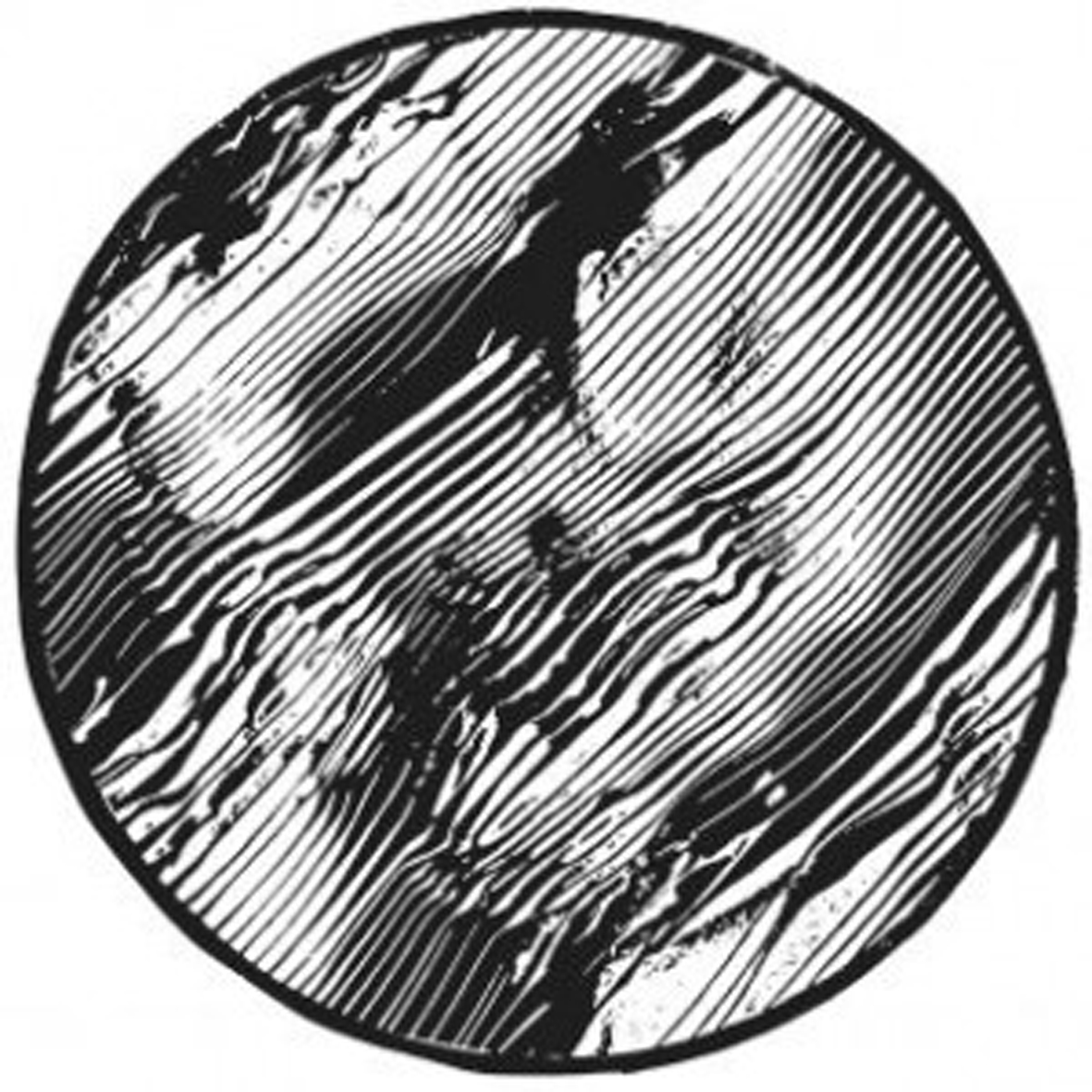 Listening to this EP is like being run over by a goddamn tank. Ren Schofield was one of the first harsh noise artists to take his cacophony to the dance floor and–along with Pete Swanson–he remains one of the best.  In fact, this, his first release for Mute's experimental music imprint, might be one of the finest Container releases to date.  While no dramatic evolution has taken place, aside from slightly more simple and accessible grooves, Adhesive is a perfectly distilled dose of relentless, pummeling noise-damaged techno from start to finish.
Listening to this EP is like being run over by a goddamn tank. Ren Schofield was one of the first harsh noise artists to take his cacophony to the dance floor and–along with Pete Swanson–he remains one of the best.  In fact, this, his first release for Mute's experimental music imprint, might be one of the finest Container releases to date.  While no dramatic evolution has taken place, aside from slightly more simple and accessible grooves, Adhesive is a perfectly distilled dose of relentless, pummeling noise-damaged techno from start to finish.
The opening two pieces strip the Container aesthetic down to its bare essence and work beautifully for it.  "Glaze" kicks things off with groove that sounds like it was unexpectedly cribbed from Neu!, but Schofield amps up the intensity with a thick, loud one-note bass line and some incremental additions to the pulsing beat.  I cannot point to any specific aspect that stands out as particularly brilliant or amazing, but it is extremely effective nonetheless, simply because an obsessively insistent and propulsive groove being strafed with electronic noise is an inherently wonderful thing.  I suppose it is a very meat-and-potatoes approach, but it definitely works.  In fact, the second song "Slush" is even better, emerging from a cacophonous industrial-noise opening to lock into a rumbling disco groove (and, of course, a similar firestorm of grinding, stuttering noise chaos).
The EP's second half is a bit more varied and adventurous, but occasionally less bludgeoning as a result.  "Complex" is probably the weakest track, though it reprises the "hyper-muscular krautrock pastiche" of "Glaze."  The problem is that it errs on the side of being too "rock" and is not quite wild enough to make it work.  It would have made a very cool breakdown or bridge in an actual, complete song of some kind, but it is not particularly compelling as a stand-alone, contextless vamp.  Much more exciting is the closing title track, which is absolutely pummeling and menacingly mechanized-sounding.  Also, "Adhesive" is on a completely different level than the rest of the album in regards to songcraft, as Ren throws in quite a few satisfying dynamic variations (stops and starts, breakdowns, etc.) and even attempts a hook of sorts with a loop of swooping dissonance.
Unfortunately, "Adhesive" inadvertently calls attention to the flaws of the other pieces, as Ren has a definite tendency to lock into a looping groove and ride it out for the entire duration of a song.  Also, his songs often tend to just endlessly build in density rather than offering multiple plateaus of tension and release–there is much room for improvement.  That said, Adhesive is so brief and so bludgeoning that Schofield's compositional deficiencies wind up being almost totally insignificant.  And Ren's prodigious talents as a producer render them even more so–these songs all invariably sound crushing.
Adhesive is a visceral, unrelenting bulldozer of a release. The details and nuances are ultimately fairly irrelevant, as this EP starts like an out-of-control train and ends before I have much time to think anything much deeper than "woah- that was heavy."
 
 
Read More
- Administrator
- Albums and Singles
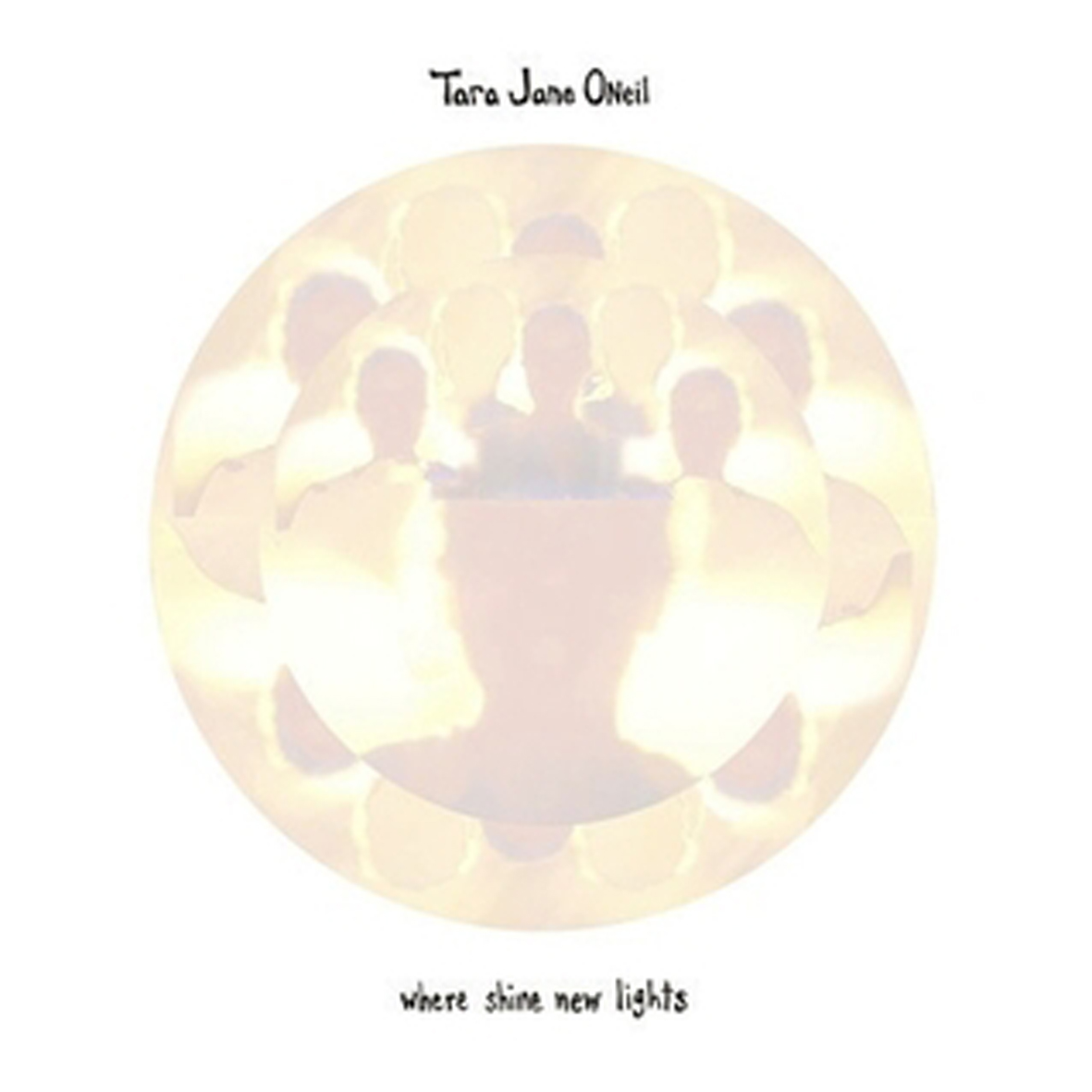 For some reason, there was a brief period in my life a while back in which every single person who learned of my early Red House Painters obsession immediately responded with some variation of "You know who else you would love? Tara Jane O'Neil."  At the time, I did not think the two artists had much in common at all, aside from the superficial traits of being both slow and melancholy, but I have always enjoyed hearing O'Neil whenever she resurfaces.  This time, after a five year solo album hiatus, she has resurfaced on Kranky–the perfect home for someone who sounds like Grouper's more sophisticated older sister.
For some reason, there was a brief period in my life a while back in which every single person who learned of my early Red House Painters obsession immediately responded with some variation of "You know who else you would love? Tara Jane O'Neil."  At the time, I did not think the two artists had much in common at all, aside from the superficial traits of being both slow and melancholy, but I have always enjoyed hearing O'Neil whenever she resurfaces.  This time, after a five year solo album hiatus, she has resurfaced on Kranky–the perfect home for someone who sounds like Grouper's more sophisticated older sister.
The overarching aesthetic of this album is a drifting, dreamlike sense of being barely there, but it is a masterfully sculpted, deliberate, and hypnotic one.  Consequently, Where Shine New Lights is best experienced as a complete album, so O'Neil's sensuous, half-lit reverie is allowed enough time to fully seep in and cast its enveloping spell. On a few occasions, however, Tara emerges from her languourous bliss-haze with something that resembles a possible single, like the achingly beautiful "This Morning Glory," which augments its wonderful melody and swooning hooks with atypically forceful accoutrements like drums, strummed rhythm guitar, and discernible lyrics.  That is inarguably the album's centerpiece, but each of the remaining few "real songs" are similarly wonderful, particularly the sad waltz of "Elemental Finding," though the folky, lilting "To Lull The Going" is certainly quite lovely as well.
The rest of New Lights shares a lot of common ground with labelmates Windy & Carl, offering up quite a bit of warm guitar/organ shimmer and cooing, reverb-heavy vocals.  Tara does that quite well too, of course, but it is always welcome when her too-often-latent experimental tendencies and other more distinctive touches surface.  Those tendencies increasingly come to the fore as the album gets closer to the end, culminating in the closing "New Lights for a Sky," which features bowed cymbals or gongs, some actual dissonant notes, and tensely bowed strings.  Less overt instances are strewn about elsewhere though, as Tara's music is so extreme in its minimalism and understatement that even the smallest events can seem quite dramatic.  In fact, some of my favorite moments, such as the clanging buoy sounds in "Welcome" or the trilling guitar in "The Signal, Winds," probably would have gone completely unnoticed if they had appeared on an album by anyone else.
This is a great album, but that comes with a large caveat: it requires quite a bit of patience and attention to fully unlock its magic.  With the exception of perhaps "This Morning Glory," it is very easy to imagine most casual listeners dismissing this as something between "vaguely pretty" and "too sleepy."  It certainly is both pretty and sleepy, but there is much hidden depth to be found as well, as O'Neil excels at creating the quietest of quiet storms.  That, I think, is a large part of her appeal, as connecting with this album feels a lot like being let in on a secret.  Also, I can think of few other albums right now that I would rather wake up to on a frigid winter morning, as almost no one does "warmly narcotic" quite as wonderfully as Tara.  Very timely release, Kranky.
 
 
Read More
- Administrator
- Albums and Singles
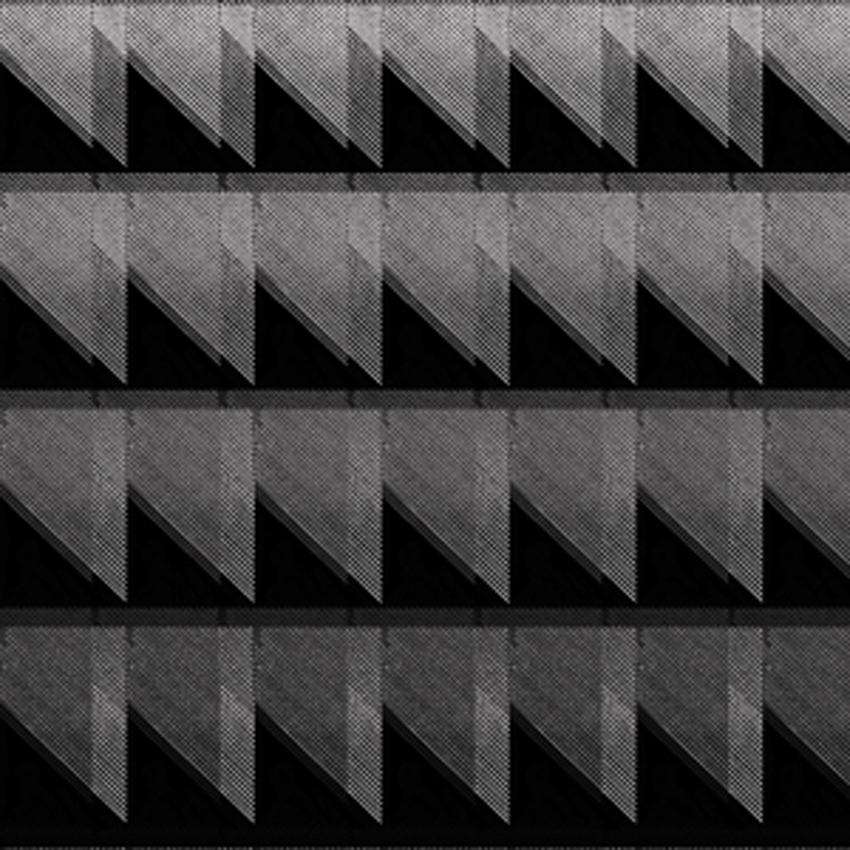 There has been an avalanche of fine dispatches from Eliane Radigue's voluminous vault in recent years, which both pleases and overwhelms me, as I want to hear them all and cannot hope to keep up.  Adnos is one of the latest of those great albums and offers the added appeal of being a major, decade-spanning, formative work as well.  Originally composed between 1973 and 1980, these three lengthy pieces are stylistic precursors to Radigue's minimal drone epicTrilogie de la Morte (widely regarded to be her masterpiece). While Adnos is not quite on the same level as its similarly ambitious successor, it certainly comes damn close.
There has been an avalanche of fine dispatches from Eliane Radigue's voluminous vault in recent years, which both pleases and overwhelms me, as I want to hear them all and cannot hope to keep up.  Adnos is one of the latest of those great albums and offers the added appeal of being a major, decade-spanning, formative work as well.  Originally composed between 1973 and 1980, these three lengthy pieces are stylistic precursors to Radigue's minimal drone epicTrilogie de la Morte (widely regarded to be her masterpiece). While Adnos is not quite on the same level as its similarly ambitious successor, it certainly comes damn close.
The Adnos trilogy is quite an interesting suite historically, as it began fairly early in Radigue's career–not "feedback era/assistant to Pierre Henry" early, but not long after Radigue started making music using a Buchla synthesizer in a NYC studio that she shared with the similarly amazing Laurie Spiegel.  The first part of Adnos was originally performed at Mills College in 1974 after Eliane was invited to play there by Robert Ashley (for an "embarrassingly low" $250).  That occasion proved to be quite fateful, as some visiting students turned Eliane onto Tibetan Buddhism, which wound up having a profound influence on much of her future work (both thematically and structurally).  Despite that revelation, the two sequels (spanning another seven years) still feel very much like variations on the original theme and seem like they could have easily been composed at the same time.  Also, the first "Adnos" actually seems more transcendent and meditative than its successors, which are a bit more experimental in nature.
Despite the fact that this is box set containing a somewhat lengthy booklet, very little information is divulged regarding how two of these three hour-long epics were created.  Amusingly, however, very specific information is provided regarding "Adnos II," the most aberrant and dissonant segment of the trilogy (Arp synthesizer, 3 1/4 tape decks, and a three-octave filter).  It is probably a decent bet to assume that "Adnos I" and "Adnos III" were the fruits of quite similar set-ups, though the presence of recognizable synthesizer tones is often quite hard to detect.  In any case, these three pieces all roughly follow a similar stylistic and compositional trajectory: a minimal, droning electronic hum glacially transforms into something more as subtle oscillations and harmonies gradually snowball.  Sort of like a butterfly gradually emerges from a chrysalis, except that the butterfly is sometimes complex and dark rather than pretty.
Aside from parts of the aforementioned and divergent "Adnos II," these pieces present exactly what I have grown to expect from Radigue: entrancing, slowly unfolding beauty and a timeless sonic purity delivered with almost-superhuman patience and attention to nuance.  For the most part, there are few textures or stylistic indicators that tie Adnos to any fixed period in time: humming feedback will always sound like humming feedback.  Consequently, the very simple and pure "Adnos I" still sounds like the very cutting edge of drone in 2014, despite being constructed four decades ago (very prescient).  Also, that trait goes a long way towards explaining why it took so long for Radigue's work to be fully embraced–she was very much ahead of her time..or possibly removed from time altogether (also, it probably did not help at all that she was a woman in a very male-dominated field).  The other two pieces do not quite maintain that illusion of timelessness as fully though.  While "Adnos III" is probably my favorite part of the trilogy, its plinking, phase-shifting dissonances definitely feel temporally related to work of some of Eliane's contemporaries.
"Adnos II" is, unsurprisingly, the least "eternal" of the trilogy, as it is extremely hard to avoid sounding like A Very Serious Electronic Composer From The 1960s Or '70s when you are making abstract music with an early synthesizer: the timbres are inherently artificial and dated-sounding (albeit in a pleasantly retro-futurist way).  That makes for something of a polarizing work, as I have seen others proclaim that it the highlight of this set, while it is personally my least favorite.  I still like it though and can easily see its appeal, as there is a lengthy passage of queasy dissonance and beeps that sometimes sounds quite beautiful and sometimes resembles the cold horror of being adrift in space.  The latter is not a feeling that I generally get from Eliane Radigue albums, so that makes for a unique, if somewhat uncharacteristic, entry into Elaine oeuvre.
Naturally, I have a few small gripes (I am chronically dissatisfied), but they are ultimately fairly trivial.  For example, I would have loved some more information about both Radigue and the pieces themselves and I am very curious about what Rhys Chatham had to say in his liner notes for the original 2002 issue (on Table of Elements).  However, the stuff that is included instead is very cool in its own right (old flyers, a handwritten letter from Arthur Russell inviting Radigue to play at The Kitchen, etc.).
Also, I found 3 1/2 hours of very similar sounding material to be a bit exhausting and I think each of these pieces would be better appreciated as a stand-alone album.  That said, there is absolutely nothing stopping me from listening to each piece as a stand-alone album (they are all on separate discs) and it is certainly convenient to not have to buy three separate releases.  In any case, this is a great set.  While I would probably not categorize Adnos as one of Radigue's masterpieces, I certainly would not argue with Important's claim that this is "one of the high points of modern minimal electronic composition."  It is exactly that–it is just that Radigue is also responsible for some even higher points than this one.
Samples:
 
 
Read More
- Administrator
- Albums and Singles
 This reissue offers the chance to hear another obscurity from the NWW list. With perfect backing, Vian plays synths, sequencer and piano, to create an exotic, space-age soundtrack that is quite distinct from his more raucous music with Red Noise.
This reissue offers the chance to hear another obscurity from the NWW list. With perfect backing, Vian plays synths, sequencer and piano, to create an exotic, space-age soundtrack that is quite distinct from his more raucous music with Red Noise.
Patrick Vian’s only solo album sounds as carefully structured as Kraftwerk but with plenty of spontaneity, too. The influence of former Gong (and Miles Davis) drummer Mino Cinelu adds a deft touch that is complemented by the playfulness of Georges Grainer on such instruments as Fender Rhodes electric piano, noise, and scissors. For all that, the opening piece, "Sphere," explores an devilishly scratchy riff set in motion by Bernard Lavialle’s guitar. The record is a prime example of the brilliant and adventurous music of its time, all too often ignored for falling outside the easy spotlight and rock categorizations of the dominant UK and US markets. A limited edition of 500 vinyl copies are probably all snapped up by now, but CD and digital download are available.
The electronics and futuristic atmospheres of Bruits et Temps Analogue are a departure from the proto-punk aggression of Red Noise. That group played its first gig in the Sorbonne during the 1968 student occupation, with Patrick Vian on guitar. He later wrote some of the music for the now seemingly lost 1975 film Hu-man starring Terence Stamp and Jeanne Moreau, with the former cast as an actor placed in various dangerous situations throughout time where his fate is decided by viewers.
Red Noise's Sarcelles-Lochères began with the sound of a toilet flushed. Perhaps Vian learned at an early age the desirability of playfulness and polymathic experimentation. His father, Boris, was a contemporary of Camus and Sartre, musician, inventor, actor, critic, engineer, and writer of such works as Froth On A Daydream and (as Vernon Sullivan) I Spit On Your Graves. That latter work, which he reputedly wrote in 15 days to prove he could churn out a best-seller, would inadvertently trigger his early death. Rising from his seat a few minutes into the film premiere of his book to yell abuse, the elder Vian suffered cardiac arrest after blurting out "These guys are supposed to be American? My ass."
 
Read More
- Administrator
- Albums and Singles
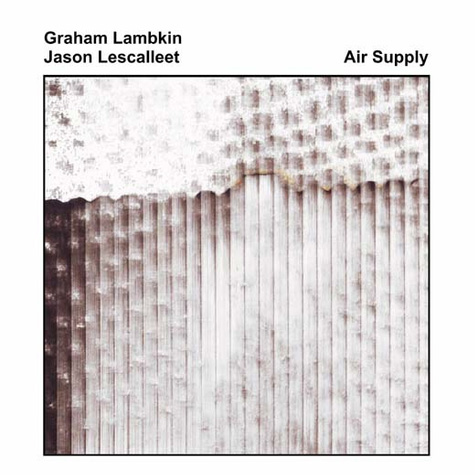 A strange spectacle murmurs unceremoniously just beneath the familiar hum of daily life. It's filled with little dramas and peculiar collisions that sneak by unnoticed—in the empty spaces of the room, out of the corner of your eye—small bits of information slip through the senses' fingers and fall into the subconscious where they become fodder for dreams. These unremembered fragments are a part of every environment and every observation, but would we recognize them if given a second chance? On Air Supply, Graham Lambkin and Jason Lescalleet resurrect such mental refuse and put just such a question to the test. They may have pointed their microphones at computer vents or the back yard, but what they pulled from those sources is utterly bizarre, to the point of being completely alien.
A strange spectacle murmurs unceremoniously just beneath the familiar hum of daily life. It's filled with little dramas and peculiar collisions that sneak by unnoticed—in the empty spaces of the room, out of the corner of your eye—small bits of information slip through the senses' fingers and fall into the subconscious where they become fodder for dreams. These unremembered fragments are a part of every environment and every observation, but would we recognize them if given a second chance? On Air Supply, Graham Lambkin and Jason Lescalleet resurrect such mental refuse and put just such a question to the test. They may have pointed their microphones at computer vents or the back yard, but what they pulled from those sources is utterly bizarre, to the point of being completely alien.
"Because the Night" starts the show with an illusion. It's cold outside. Someone is walking down a crunchy dirt road in heavy boots, the fabric of his thick winter coat audibly brushing against itself as he goes. He picks up an old shovel and begins digging a hole, or maybe shoveling snow. A chilly hum floats in the air, a substitute for the icy temperature outside. As he digs, a slow, warbling howl suddenly and shockingly pierces the scene. It moans, then fades, then retreats into the distance. The perspective shifts. Someone tinkers with a plastic box, presses a button, and the activity stops. There's only that transparent blue tone in the air, and a few quiet noises beeping somewhere in the distance. Winter at the Lescalleet home in Berwick, Maine, where Air Supply was recorded, seems just a tad frightening.
Only the liner notes tells us that the album was recorded in late May of 2010. It's unlikely there was any snow on the ground to shovel. The fabric noise could be coming from torn sheets of paper, the crunch of boots on gravel might actually be the sound of someone walking through piles of leaves, and who knows where the animal moan came from, but it doesn't sound dubbed in. Whatever it was, it was right there, in range of the microphone.
Air Supply deals almost exclusively in these kinds of anonymous noises and illogical, imagination-confounding combinations. Unlike the music of The Breadwinner, this music conceals its origins, making identification difficult. There are no bathrooms, no kitchen utensils, no fireworks down the street—nothing with which to get your bearings—just a yarn of half-recognizable threads that unravel in unpredictable ways. And little attempt is made to make the unfamiliar sound familiar. Air Supply reintroduces the mundane, forgotten, and ignored ephemera of daily mindlessness to the conscious mind without the assistance of context or narrative. Divorced from the places in which they first arose, these noises come to us like pieces in a puzzle.
It's tempting to think the idea is to find a way to make those pieces fit together, but they're fragmentary by nature. If the pieces could be reassembled from the few recognizable bits, it's unlikely they'd form a coherent picture anyway. The album cover, title, and song names all parallel that fact. The title and artwork reference a Brian Eno and Robert Fripp bootleg, the opening song's title could be a nod to Patti Smith, or maybe Bruce Springsteen, and the title also points to Australia's best known soft rock duo, whose primary songwriter and guitarist is also named Graham.
The un-connectable dots move from the titular references and into the music when Lambkin and Lescalleet show up in "Color Drop" talking about VHS tapes. There they expose themselves as sound sources and as manipulators. Jason's mouse-clicking stops the looping melodic fragments that started the song and, for a brief moment, the whir of his computer fan fills the room. That little tidbit lets the listener in on the process behind the song for just a moment. The spaces and noises inside the Lescalleet home aren't just being captured, they're being created too; arranged and re-arranged in ways that would normally be impossible. The process matters. It's a part of the music, not just an invisible force behind it. So we get to hear the process as part of the finished work, which throws the idea of a finished work into question.
Consequently, the neat division between music and the clamor of waking life meets a firm roadblock in these songs, just as it did with The Breadwinner. Lambkin and Lescalleet's music contains melody of a kind, and rhythms too. Language and thought are more than flexible enough to accommodate the duo's harmonies. Yet they derive their material from noise, and not even the common sort. Rather than breaking down the sound of appliances and making music that way, they start with the scraps and build their environments up.
The audible chugging of a computer's hard drive is the sort of thing most people attempt to drown out. Internet message boards have enormous threads devoted entirely to the topic of filtering out mechanical nuisances, radio interference, and other such small things. People go to all kinds of extremes to hush these sounds up. But on Air Supply they all intermingle quite beautifully and often quite confusingly: with the sound of a resonant gong, birds outside, someone pounding a rubber ball into concrete, and all the phantom activities caught in the album's central temperature trilogy—a sequence as baffling and as intriguing as they come. And tinged with a dark undercurrent too: the passing shadow of something that the ear registers, but that the mind is always racing to catch.
samples:
 
Read More
- Administrator
- Albums and Singles
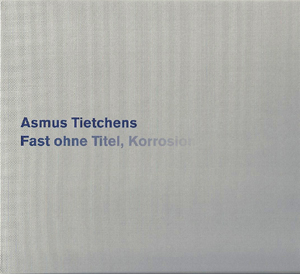 Much of legendary composer Asmus Tietchens' recent work has been in the form of collaborations, with other like minded artists such as Richard Chartier and Dieter Moebius, with a few solo works coming out amidst the sprawling reissue campaign on Die Stadt. Fast ohne Titel, Korrosion is one of those few new and solo works, and it just reinforces that even so far into his career, Tietchens’ is no less important, and his sly sense of humor is never far behind.
Much of legendary composer Asmus Tietchens' recent work has been in the form of collaborations, with other like minded artists such as Richard Chartier and Dieter Moebius, with a few solo works coming out amidst the sprawling reissue campaign on Die Stadt. Fast ohne Titel, Korrosion is one of those few new and solo works, and it just reinforces that even so far into his career, Tietchens’ is no less important, and his sly sense of humor is never far behind.
Black Rose Recordings
The most obvious manifestation of humor on here is in the titles of each piece, all of which feature the phrase "Ernste Musik" ("Serious Music"), a nice shot at the overly serious world of electro-acoustic sound art.This levity is extended to the music, too:the bent, wobbly pitches of "Besonders Ernste Musik" ("Particularly Serious Music") have a distinctly light hearted feel to them, and "Keine Ernste Musik" ("No Serious Music") also heavily utilizes a motif that sounds like a carnival organ early on.
Additionally, "Eingeschränkt Ernste Musik" ("Limited Serious Music") has a slightly jaunty feel to it, but the dissonant, crackly electronics are shaped into a pseudo-rhythm that almost seems like his old Sky Records releases updated for the glitch scene."Kaum Noch Ernste Musik" ("Hardly Yet Serious Music") features prominent rhythmic passages that sometimes resemble heavily mutated drum and bass loops.Rhythmic Tietchens is usually my favorite Tietchens, and this is no different, but it does go on for a bit too long.
It is not all levity and rhythms here, however, and he contributes just as much minimalist and austere work that a serious composer in this field should."Ernste Musik" is based heavily on what could be vibrating air duct heavily amplified, with shrill, sharp stabs of noise that results in a piece that does sound quite serious."Sehr Ernste Musik" ("Very Serious Music") follows suit as far as the mood goes, with low end sweeps of noise like a fragmented radar beacon in frigid arctic air, and even the slightly lighter tones that appear near the end are suppressed by dark growls of noise.
It is Asmus Tietchens' sense of humor that solidifies the brilliance of Fast ohne Titel, Korrosion.The closing piece, "Im Ernst (Für H.K.)" ("Seriously?") lets everything go, with silly processing of recorded strings, stuck vinyl loops, captured conversations and laughter that is entirely jovial, in a field where such things are usually forbidden.I am always glad to hear Tietchens working in something more rhythmic, as his synth pop sounds on Sky and his industrial works on Discos Esplendor Geometrico are personal favorites, so hearing that side of him was refreshing.For the times he chooses to be serious, he constructs bleak and dark electronic sounds with the best of them, yet it is hard to listen to the academic sounding works without picturing him holding back a grin the whole time.
samples:
 
Read More
- Administrator
- Albums and Singles
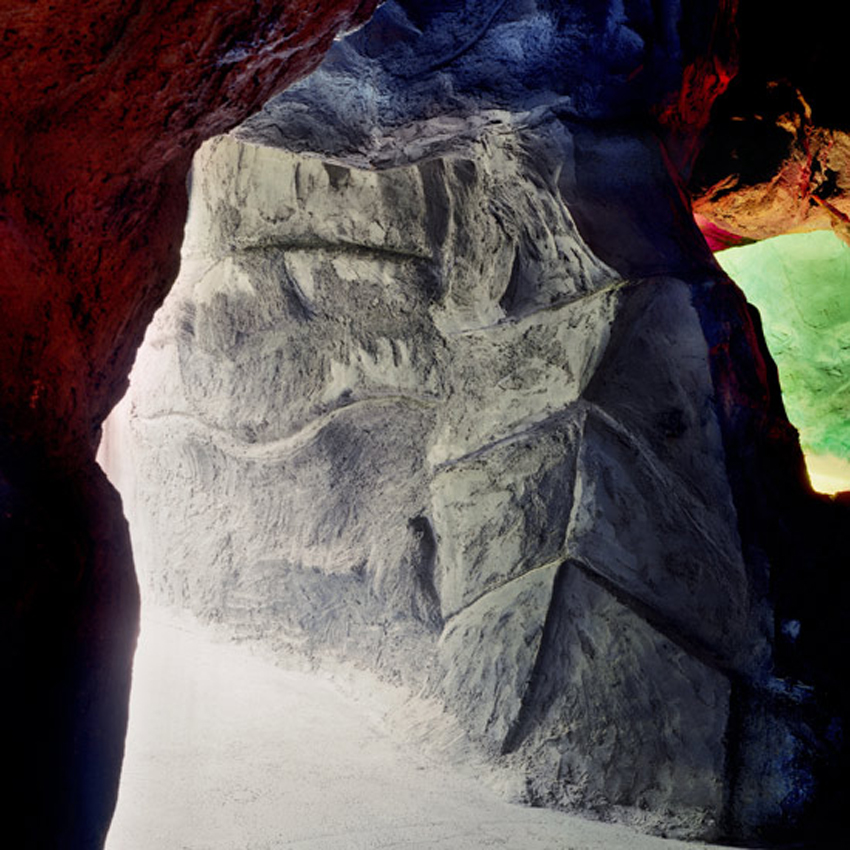 At first glance, Katie Gately has a hell of a lot in common with Holly Herndon: both are CA-based and use the voice as their primary instrument and both debuted to international acclaim while still attending college.  The similarities end there, however, as Gately's latest work displays a strong pop sensibility and talent for hooks that was not especially apparent on her significantly more unhinged and abstract cassette from earlier in the year (Pipes).  While I still do not think her aesthetic is fully developed, her combination of heavily grinding and crunching field recordings and lush vocal loops is nevertheless quite promising and unusual.
At first glance, Katie Gately has a hell of a lot in common with Holly Herndon: both are CA-based and use the voice as their primary instrument and both debuted to international acclaim while still attending college.  The similarities end there, however, as Gately's latest work displays a strong pop sensibility and talent for hooks that was not especially apparent on her significantly more unhinged and abstract cassette from earlier in the year (Pipes).  While I still do not think her aesthetic is fully developed, her combination of heavily grinding and crunching field recordings and lush vocal loops is nevertheless quite promising and unusual.
Gately's debut cassette proudly proclaimed that "no instruments were used in the making of this recording" and her stance on that seems to have only softened slightly in the ensuing months.  For the most part, this EP is built from complexly collaged machine noises coupled with Gately's own fairly simple and unadorned vocals.  Initially, I thought Katie resembled some kind of post-industrial Julianna Barwick, but ultimately decided that was inaccurate for a very fundamental reason: Katie does not use her voice to create any kind of multi-layered, reverb-heavy, ethereal dreamscape.  Instead, she generally keeps her central vocal melodies straightforward and relatively unprocessed, which befits her quasi-hymnlike songs wonderfully.  That said, she is also quite prone to sudden artificial pitch-shifts, which keeps things nicely unpredictable and disorienting.
Given that this is only a six-song EP, there are not many fully formed songs, but the ones that do exist are almost all quite good.  "Last Day" is the closest thing to a single, sounding like a simple, pretty folk song bolstered by crunching, stomping, and scraping field recordings and a cool looped vocal hook.  That formula is reprised a bit with the even better "Dead Referee," but Gately balances its slinkier, breathier tendencies with an impressive cacophony of violently chopped and distorted vocal snippets.  I was also quite fond of the heavily pulsing "Stings," which unexpectedly gives way to a rather beautiful and warm coda.
The remaining pieces are a mixed bag, but generally a very likable one.  The opening "Ice" eschews recognizable vocals completely, but coheres into an appealingly lurching and buzzing industrial soundscape.  The brief "Left Half," on the other hand, eschews Katie's sound collage tendencies for a bit of dreamy This Mortal Coil-esque atmosphere (think "Dreams Are Like Water").  Only the closing "Stems" could be considered a bit of a misstep (albeit an adventurous one), as Katie multi-tracks and processes her vocals to a disorienting, artificial degree before plunging into heavy, grinding noise.  The ideas themselves are not bad, but their execution lacks the deft touch of the other pieces.
If this EP has another flaw, it is merely that the songs are not universally memorable enough to elevate this from a very good release to a stunning one.  While a couple of pieces are definitely hooky enough to rattle around my head long after the album is finished, these are generally more "soundscapes that sound like songs" than "songs that sound like soundscapes."  Also, I think this release would have been significantly more attention-grabbing and powerful if its harsher, more "musique concrète" elements were not quite as smoothed over.  That said, Gately's aesthetic is still quite a striking, inventive, and unique one and she tends to execute it quite skillfully.  Having original ideas and a strong intuitive grasp of dynamics and space is definitely the hard part: all the rest is just tweaking the formula.  Given the radical evolution already displayed since Pipes, I suspect that Katie's next release will probably eclipse this one handily, but this is certainly an impressively strong and promising effort in its own right.  Gately deserves far more attention than she has been getting.
 
Read More
- Administrator
- Albums and Singles
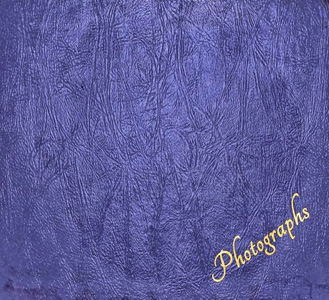 After amplifying their homes and magnifying the subconscious; after reshaping kitchenware into instruments and finding voices in the buzz of computer fans, distant traffic, and the crunch of dirt; after transforming the spaces around them and constructing a space-time of their own, Graham Lambkin and Jason Lescalleet finally turn the microphones on themselves. And not just on the noises they make, but on the places they grew up, on the people they've known, on the ideas that have driven their work, the sounds they love, and ultimately on the past and their memories. Don't come to the show expecting self-portraits though. On Photographs Graham and Jason make enigmas of themselves. We get to see a shadow of them in these pictures, but everything they do and every event they capture points to a subject somewhere outside the frame.
After amplifying their homes and magnifying the subconscious; after reshaping kitchenware into instruments and finding voices in the buzz of computer fans, distant traffic, and the crunch of dirt; after transforming the spaces around them and constructing a space-time of their own, Graham Lambkin and Jason Lescalleet finally turn the microphones on themselves. And not just on the noises they make, but on the places they grew up, on the people they've known, on the ideas that have driven their work, the sounds they love, and ultimately on the past and their memories. Don't come to the show expecting self-portraits though. On Photographs Graham and Jason make enigmas of themselves. We get to see a shadow of them in these pictures, but everything they do and every event they capture points to a subject somewhere outside the frame.
Photographs work by suggestion. Take any photo off the Internet and start asking questions about it: Who is that in the picture? What is it that they're standing in front of? When and where was it taken, and why from that angle? Who is behind the camera? What we see in them and what they show are inevitably unequal. The image presents the viewer with an apparent set of facts, but without context or witnesses or some personal experience bringing everything into focus, the subjects fail to take definite shape. Something is missing.
So it is with Graham Lambkin and Jason Lescalleet's music. The apparition of familiarity presents itself to the listener by dint of the material employed: intelligible conversations, fixable locations and precise directions to them, a loop from Kiss's "Great Expectations"—our acquaintance with sights and sounds such as these, plus the incredible artwork with family, friends, place names, and the images of Graham and Jason as children—it's as if they're opening a door into their personal lives, or pointing us to a keyhole through which we might spy a handful of their private thoughts. How could it be otherwise?
To answer that question it's best to ask another one: what is it that we actually see and hear in these songs? Disc one in this two-disc set begins with "Loss," in which a pair of anonymous voices explain what the word "loss" means to them. One of the respondents discusses the loss of their grandparents, the other describes a feeling of daily disorientation: he wakes up and is unsure of where he is despite a firm mind, familiarity with the local geography, and a copy of this year's calendar. As he elaborates, the audio suddenly cuts out. We hear clicking, a compartment opening and shutting, as if the tape needed changing mid-sentence, and then the conversation continues.
From that point forward the listener is subjected to the same kind of confusion. By way of sudden edits, seamless transitions, and invisible leaps, Lambkin and Lescalleet navigate the streets and sights of Folkestone, Kent in the United Kingdom, where disc one was recorded. They capture a morning church service in "Quested to St. Hilda," converse with unnamed participants at tea time, and in the absolutely brilliant second half, hitch a ride with a banjo player, talk with Graham's sister about her new car, fill up their gas tank in a rain storm, and discuss walking along the harbor during winter. It's a whirlwind of bewilderment and constant flux made all the more exciting by the voyeuristic thrill it inspires.
The catch is that these events butt up against a blend of slowed down recordings, synthesizer melodies, and manipulated audio morsels à la Luc Ferrari. Places blur together, time accelerates or slowly loses its shape, conversations start and stop with an invisible logic. It's natural to ask where Graham and Jason are, who they are with, and when. Is that a clock I hear in the background or does "Danger of Death" capture the machinery of a hospital visit? As with Air Supply, it's tempting to work the confusion out and invest the sounds with a specific meaning, a temptation that's reinforced by the subject matter and presentation. The image for "Danger of Death" that's included in the artwork is ominous, and it's hard not to read that content into the audio.
But the impossibility of putting it all together is insured by the same means. Having a clear sense of where Graham and Jason might be, and knowing that family and friends are involved, only complicates matters, it doesn't clarify anything. The juxtapositions and edits disorient and create more confusion this way. The conversations, with all their allusions and suggestions, gain weight, become overloaded with meaning, and nearly burst. Every interaction and reference, no matter how slight, acquires a special significance. Even the skillet in the Lambkin kitchen seems important.
Appropriately, the second disc begins with a conversation about change, specifically the changes that towns undergo. It's unclear whether the town in question is Boylston or Worcester, Massachusetts, where disc two was recorded, but the message is the same either way. What we hear in Photographs is only a fragment: a snippet of audio, the memory of a time or place that's gone now, little bits and pieces of something bigger, each incomplete in itself and each leading out in potentially every direction—from the sound of church bells to the watery echo of tea time in slow motion, from cash registers to traffic jams and opinions about plum pudding. There's no stepping back and getting a wider view, unless maybe you're Graham Lambkin or Jason Lescalleet.
Their memories and their sense of place and time ground Photographs. For everyone else, the music hovers in the air. What was true of household items on The Breadwinner and of the half-unheard noise on Air Supply is true even of such solid things as the local grocery store and past events. There's no wrapping it all up or making sense of it as a whole. Perceptions twist, details shrink and expand, memory loses its clarity. As soon as we think we have a grip on anything, it changes shape and spills to the floor.
That's how Graham and Jason conclude their trilogy. The secret sounds they found hiding in their homes and in the studio spills over into the places they grew up and into the relationships they formed. The music is in what they remember and in how they remember it, but it's not fixed in stone. We also get the chance to see and hear, and in observing we find that the pictures change. Maybe they gain or lose meaning. Maybe they're just pretty shots from some place far away. Whatever the case, the images merely point us in a direction. The music emerges in the tension between what they suggest and what we perceive.
samples:
 
Read More